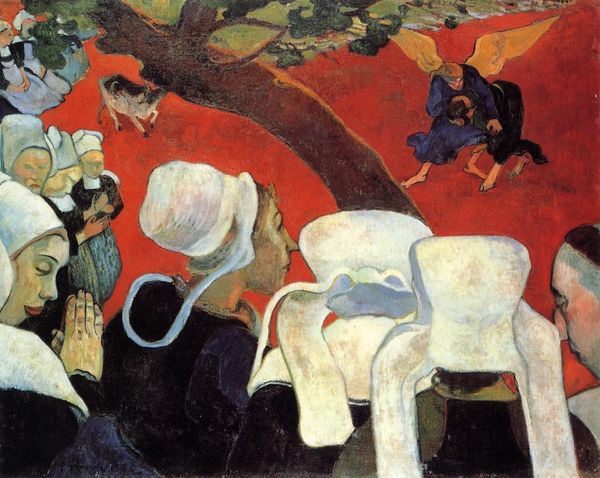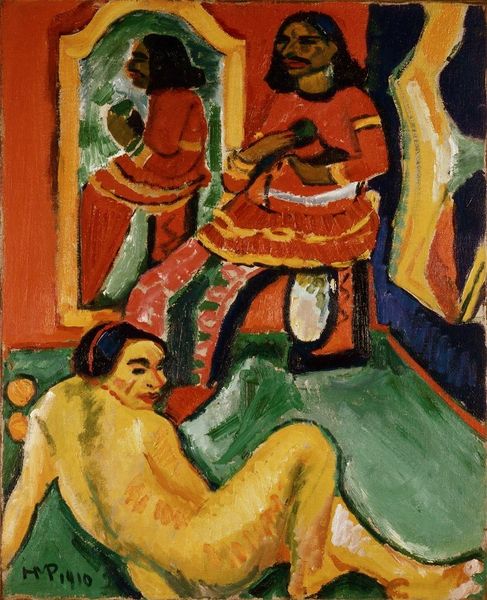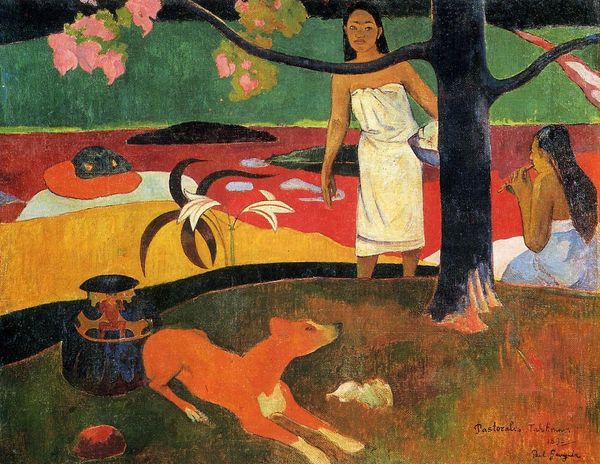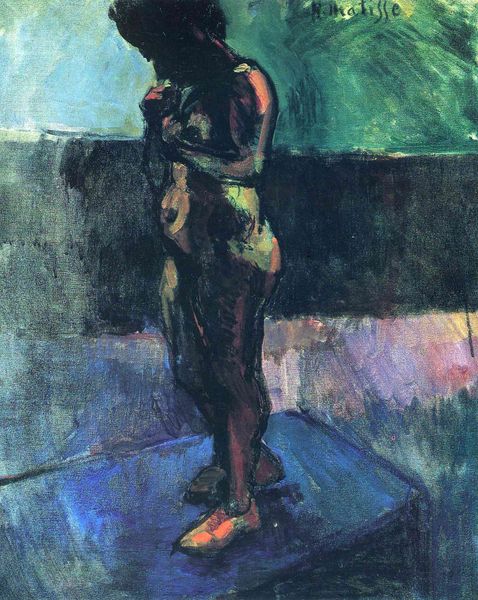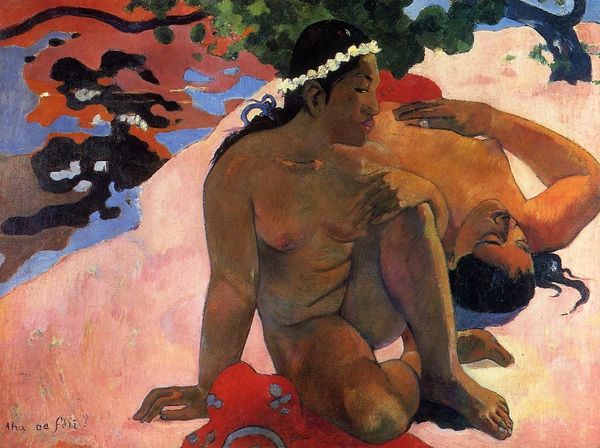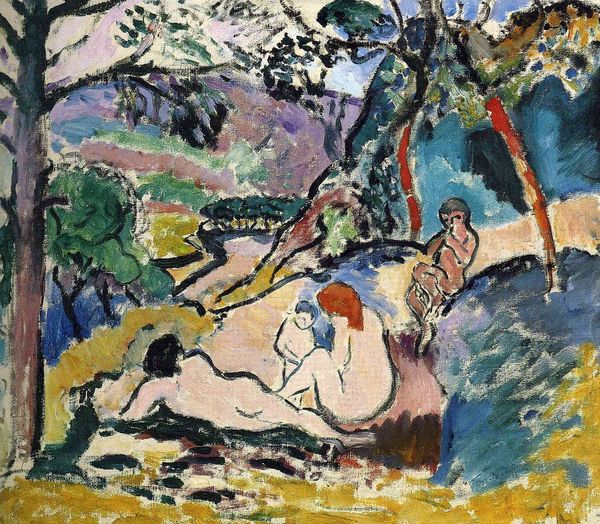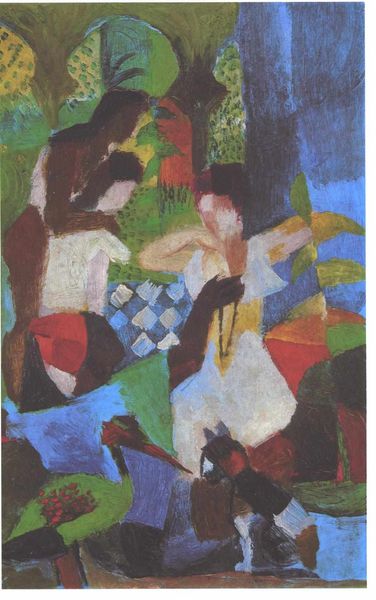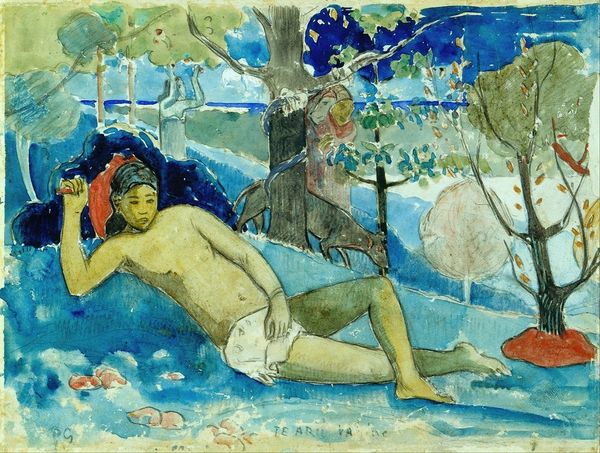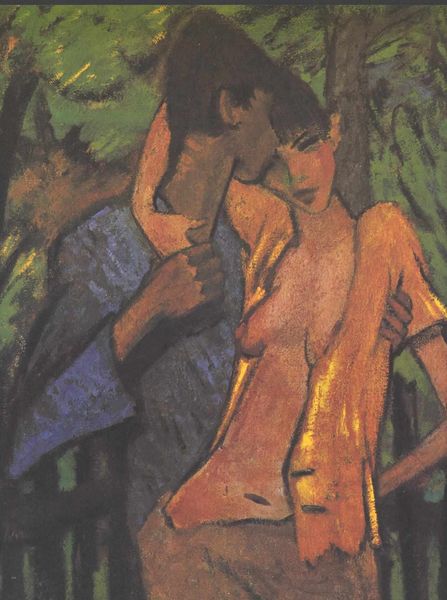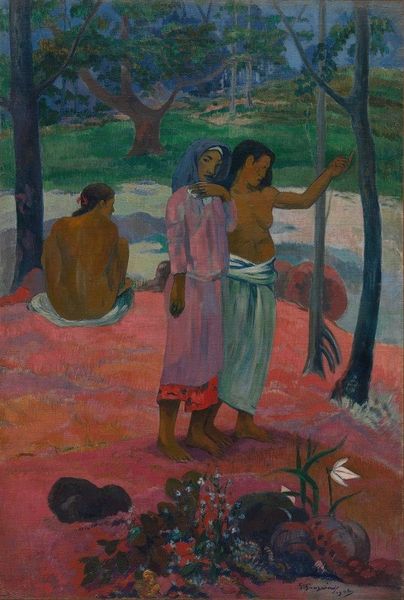
painting, oil-paint
#
portrait
#
painting
#
oil-paint
#
landscape
#
figuration
#
folk-art
#
orientalism
#
symbolism
#
post-impressionism
#
nude
#
erotic-art
Dimensions: 91 x 68 cm
Copyright: Public domain
Curator: Allow me to introduce Paul Gauguin's "Her name is Vairaumati", created in 1892. Currently, it resides here at the Pushkin Museum. Editor: An arresting image! There's a dreamlike quality to it. The muted greens and blues against the ochre skin of the figures creates a beautiful tension. And the perspective is unusual – almost flattened. Curator: Precisely. Gauguin’s deliberate flattening is integral. Notice how he uses simplified forms and broad planes of colour. There is a move toward abstraction, departing from realistic representation in favor of symbolic expression. This aligns with the Symbolist movement which influenced much of his later work. Editor: This approach to representation is so contrary to Western academic artistic trends. It's impossible to separate this canvas from his deliberate choice to center non-Western, and specifically Polynesian, cultures in his work. We have to examine Gauguin's fascination with Tahiti within the larger history of European colonialism and exoticism. It really compels viewers to grapple with his gaze and the power dynamics at play. Curator: Undeniably, but let us also note his application of colour. The use of non-naturalistic, seemingly arbitrary colors adds to its dreamlike effect. Notice the orange leaves scattered near the primary figure. Editor: I interpret them as symbolic, and somewhat melancholic, underscoring ideas of beauty, loss and the fleeting nature of time. Given the context of colonial exploitation in Tahiti during Gauguin’s stay, it raises essential ethical issues about artistic creation, cultural appropriation, and our responsibilities as viewers. Curator: Of course. But returning to matters of design, consider how the lines, the shape, and the mass are very consciously employed for pictorial organization; Gauguin wasn't merely recreating the seen, he created the felt. Editor: True enough. Perhaps by dissecting our viewpoints, we come a bit closer to a complex understanding. There's definitely tension at play in trying to celebrate the composition while understanding Gauguin's positioning in Tahiti and French imperial expansion at the time. Curator: An interesting point. It encourages us to view "Her name is Vairaumati," and indeed all works, with both aesthetic appreciation and a keen critical consciousness. Editor: Indeed, a fitting thought on which to end our reflections.
Comments
No comments
Be the first to comment and join the conversation on the ultimate creative platform.
